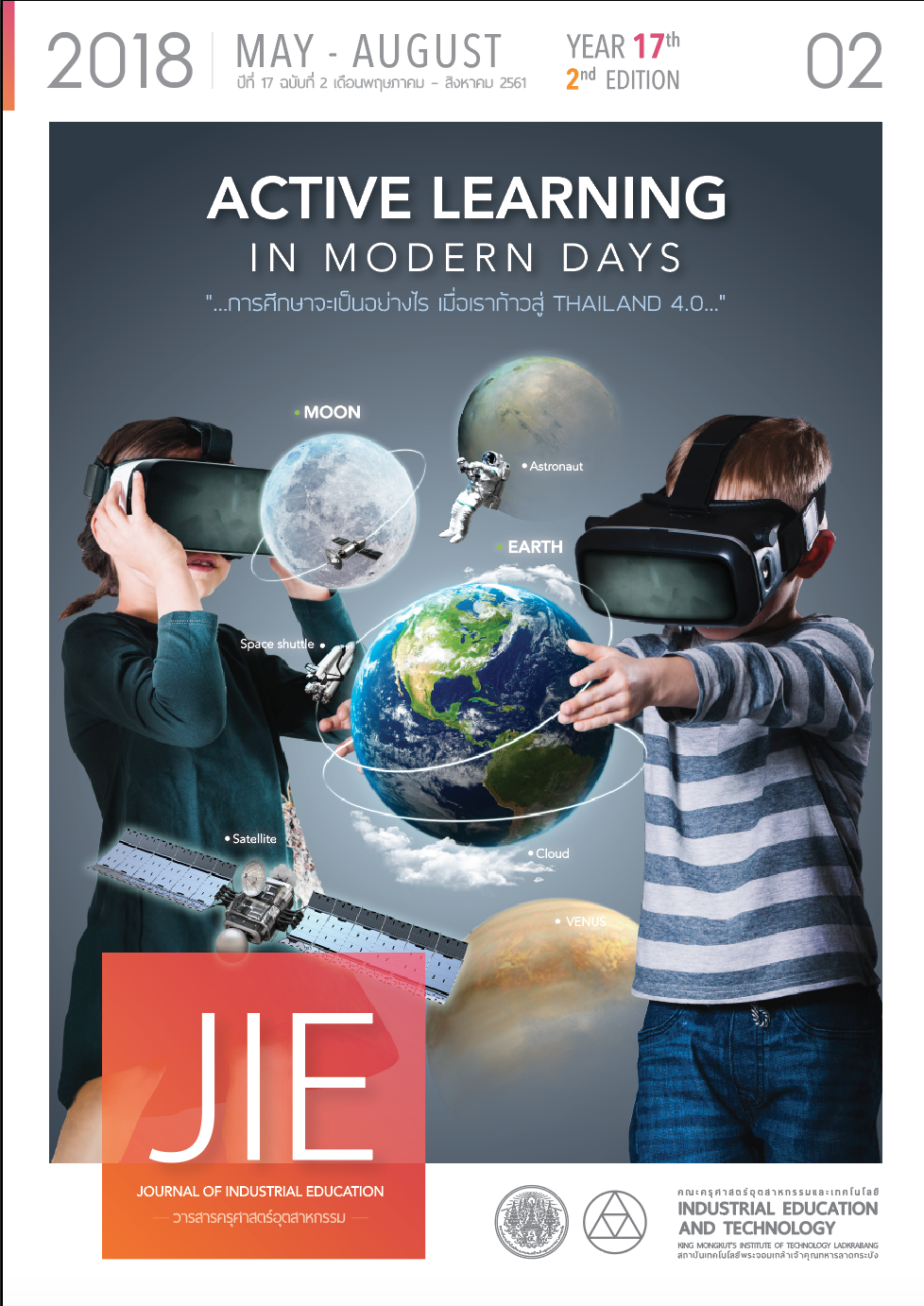THE DEVELOPMENT OF ONLINE LEARNING USING FLIPPED CLASSROOM TO ENHANCE LEARNING ACHIEVEMENT ON PRESENTATION USING COMPUTER SOFTWARE FOR GRADE 10 STUDENTS
Keywords:
Online learning, Flipped classroom, Learning achievement, Learning achievementPresentation using Computer Software, Grade 10 StudentsAbstract
The objectives of this research were 1) to develop and examine the quality of the flipped online learning classroom lesson plans on Presentation using Computer Software 2) to develop and examine the efficiency of online learning of Presentation using Computer Software using flipped classroom and 3) to compare the learning achievements of students between the students who learned with online learning using the flipped classroom concept and the students learning with conventional educational methods. The samples of the study comprised grade 10 students at Samsen Wittayalai School enrolled in the Presentation using Computer Software course in the academic year 2/2017 selected by the Cluster Random Sampling method for 3 out of 4 classrooms that had 30 students per classroom resulting in a total of 90 persons. The research instruments included 1) online learning on Presentation using Computer Software 2) flipped online learning classroom lesson plans 3) conventional classroom lesson plans 4) learning achievement test consisting of a multiple-choice test on the theory and practice of the Presentation using Computer Software. The statistics used in the data analysis included arithmetic mean, standard deviation and t–test independent group. The results of this research revealed that 1) the quality of the flipped online learning classroom lesson plans on Presentation using Computer Software was at a very good level ( = 4.58) 2) the efficiency (E1/E2) of online learning using flipped classroom was found to be at 85.56/84.67 and 3) the achievement of students after learning with online learning using flipped classroom was found to be higher than the achievement of students who learned with conventional educational methods at a statistically significant level of .05.
References
[2] Jintavee Khlaisang. 2013. E-Learning Courseware : Concept to practice for e-learning at all levels. 2nded. Bangkok : V.Print (1991).
[3] Thanomporn Laohajarussang. 2011. Web-based Instruction Innovation for quality teaching. Journal of Education, 28(1), 87-94.
[4] Vicharn Panich. 2013. Roles in a Flipped Classroom: Teachers & Students. Bangkok : RS Printing.
[5] Branch, R.M. 2009. Instructional Design: The ADDIE Approach. New York: Springer.
[6] Bergmann, J. and Sams, A. 2012. Why Flipped Classrooms Are Here to Stay. Education Week,
45(2),17-41.
[7] Chaiyong Brahmawong. 2013. Developmental Testing of Media and Instructional. Silpakorn Educational Research Journal, 5(1), 7-19.
[8] Raweewat Siriban. 2010. Guidelines for Developing Instructions. Department of Curriculum and Instruction Development Journal, 2(11), 19 – 23.
[9] Anderson, L.W, and Krathwohl, D.R. 2001. A Taxonomy for Learning, Teaching, and Assessing: A Revision of Bloom's Taxonomy of Educational Objectives. New York: Longman.
[10] Chatree Girdtham. 2017. Concepts of Learning Assessment and Evaluation. Retrieved 1 October, 2015, from http://edu.vru.ac.th/sct/cheet%20downdload/6.pdf
[11] Punnee Leekitchwatana. 2016. Research Methods in Education. Bangkok: A service supply.
[12] Office for National Education Standards and Quality Assessment. 2011. Quality Assurance
Manual for basic education. Samut Prakan: Offset Plus Co., Ltd.
[13] Nawaphat Kemkaman. 2015. The Effect of Flipped Classroom Instruction with e-Learning Courseware on chievement of Information Technology II Subject for Grade 10 Students. Journal of Industrial Education, 14(3), 615 – 622.
[14] Tanyathon Piwpong. 2017. Development of Web-based Instruction Integration Flipped Classroom Direct Current Circuit for the Electronics Students in the Vocational Certificate Level. Master of Science in Technical Education. King Mongkut's University of Technology North Bangkok.
[15] Fulton, K. 2012. Upside Down and Inside Out: Flip Your Classroom to Improve Student Learning. Learning & Leading with Technology, 39(8), 12-17.
[16] Burachai Sirimahasakorn. 2002. A Learner-Centered Syllabus. Bangkok : Book Point.
[17] Joseph Chtipps. 2013. The Effectiveness of Using Online Instructional Videos with Group
Problem-Solving to Flip the Calculus Classroom. California State University, Northridge.
Downloads
Published
How to Cite
Issue
Section
License
"The opinions and contents including the words in papers are responsibility by the authors."
"ข้อคิดเห็น เนื้อหา รวมทั้งการใช้ภาษาในบทความถือเป็นความรับผิดชอบของผู้เขียน"



